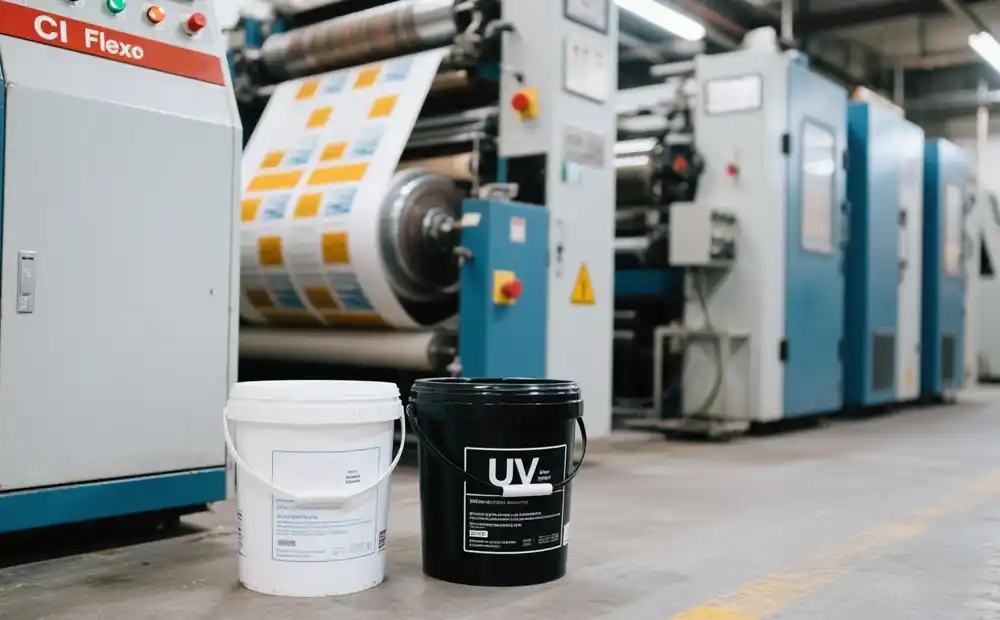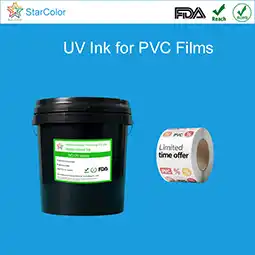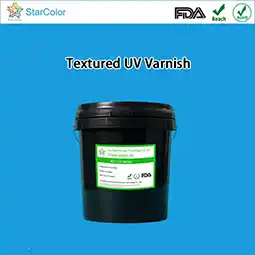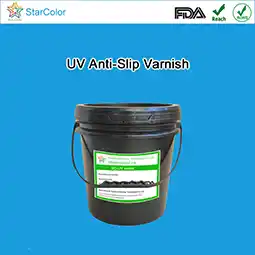What type of ink is used in flexography?
Date: Jul 28 2025 From: Star Color Views:
Starting from the characteristics of the flexographic printing process, this article will systematically analyze the technical parameters of three mainstream flexographic inks (water-based, solvent-based, and UV inks), and analyze the adaptability of various inks in combination with flexographic equipment types (CI central impression type, stack type, Inline online type, Hybrid type), helping us make the best choices in different application scenarios.
I. Overview of Flexographic Printing Process and Equipment Types
Flexography is an indirect printing method that transfers ink to a flexible printing plate through anilox rollers and then prints it on the surface of the substrate. Its key characteristics are:- Use of flexible plates (mostly resin or rubber)
- Low ink viscosity, suitable for high-speed printing
- Adaptable to various materials, such as paper, plastic films, aluminum foil, etc.
Common flexographic equipment structures are as follows:
| Equipment Type | Structural Characteristics | Application Scenarios |
|---|---|---|
| CI Central Impression Type (Satellite Type) | All colors revolve around the central impression cylinder, with high registration accuracy | High-speed printing of flexible packaging, BOPP, PE, PET films |
| Stack Type | Each color has an independent unit, arranged vertically stacked or linearly | Packaging paper bags, non-woven fabrics, fruit bags, medium and low-speed multi-material printing |
| Inline Type | Printing units integrated with die-cutting, glazing and other entire lines, arranged in a straight line | Labels, self-adhesives, medical stickers, bill types |
| Hybrid Type | Integrates multiple printing methods such as water-based and UV | Personalized labels, high-end packaging, functional coatings |

II. Analysis of Common Flexographic Ink Types and Technical Parameters
1. Water-Based Flexographic Ink
With water as the main solvent, it is environmentally friendly and safe, widely used in food packaging, daily chemical packaging, paper products, etc.| Technical Parameters | Range/Characteristics |
|---|---|
| Viscosity (25℃, No.4 cup) | 25–45 seconds (adjust according to printing speed) |
| pH Value | 8.0–9.5, requiring dynamic monitoring and adjustment |
| Drying Method | Hot air, IR drying (high requirements for equipment drying section) |
| Surface Tension | 30–35 dyn/cm, suitable for polar materials |
| VOC Emission | <5%, environmentally friendly, meeting FDA and REACH standards |
| Adhesion | Corona treatment or primer needed for non-polar plastic films |
Advantages:
- Low odor, low migration, suitable for food-grade applications
- Safe to operate, no flammable risks
- Mainstream in environmental protection trends, suitable for replacing solvent-based inks
Application Range: Paper packaging, non-woven fabrics, food packaging paper, PE coated paper, BOPP films, fast food bags, shopping bags, etc.
2. Solvent-Based Flexographic Ink
With organic solvents such as alcohols and esters as carriers, it volatilizes quickly and has strong adhesion, suitable for non-polar materials and high-speed printing.| Technical Parameters | Range/Characteristics |
|---|---|
| Viscosity | 20–40 seconds, strong fluidity |
| Drying Speed | Fast, suitable for CI high-speed printing |
| Adhesion | Excellent, suitable for BOPP, PET, PE and other films |
| VOC Emission | High (60–80%), requiring exhaust systems |
| pH Control | Not needed, system stability is high |
Advantages:
- Strong adhesion, no need for corona or treatment layer
- Fast drying speed, suitable for mass high-speed production
Disadvantages:
- Safety hazards (flammable and explosive)
- High VOC emissions, subject to many environmental regulations
Application Range: Frozen food packaging films, composite bags, condiment films, etc.
3. UV Flexographic Ink
Curing reaction is initiated by ultraviolet irradiation, no volatilization, and instant drying.| Technical Parameters | Range/Characteristics |
|---|---|
| Viscosity | High (1000–2500 cps), requiring special ink fountain and anilox roller |
| Drying Method | UV lamp or UV LED, instant curing |
| Adhesion | Strong, applicable to various coated substrates |
| Environmental Friendliness | Zero VOC, no solvent volatilization |
| Storage Stability | High, not affected by pH or ambient temperature |
Advantages:
- Dries immediately after printing, saving space
- High precision, suitable for small characters and fine patterns
- Can realize online cold stamping, die-cutting, varnishing and other processes
Disadvantages:
- High investment cost (UV lamp, cooling system)
- Photoinitiator components need strict control to prevent migration
Application Range: Cosmetic labels, wine labels, pharmaceutical packaging, self-adhesives, metal foil packaging.
III. Adaptability Analysis of Inks and Flexographic Equipment
| Flexographic Equipment Type | Recommended Ink Type | Typical Applications |
|---|---|---|
| CI Central Impression Type (Satellite Type) | Water-based / solvent-based flexographic ink | Plastic film packaging, food bags, composite films |
| Stack Type Flexographic Press | Water-based flexographic ink | Paper bags, non-woven packaging, toilet paper bags |
| Inline Online Flexographic Press | UV flexographic ink | Labels, self-adhesives, e-commerce barcodes, drug stickers |
| Hybrid Type Flexographic Press | Combination of water-based and UV inks | High-end packaging, functional films, metallized labels |
Selection Suggestions:
- For paper substrates → Prefer water-based inks
- For non-polar film substrates → If corona treatment is perfect, water-based inks can be used; otherwise, choose solvent-based or UV inks
- For online processes and fine patterns → Prefer UV inks with Inline or Hybrid equipment
- Focus on food safety and environmental certifications → First choose low-migration water-based inks, combined with CI equipment and hot air drying systems
IV. Comprehensive Comparison Table of Three Types of Inks
| Attribute | Water-Based Flexo Ink | Solvent-Based Flexo Ink | UV Flexo Ink |
|---|---|---|---|
| Environmental Friendliness | ★★★★★ (Low VOC) | ★★ (High VOC) | ★★★★ (Zero VOC, but contains photoinitiators) |
| Drying Method | Hot air/IR | Volatilization | UV curing |
| Equipment Requirements | Drying system, pH control | Exhaust system, explosion-proof | UV lamp, cooling system |
| Adhesion | Medium (needs treatment) | Strong | Very strong |
| Cost | Medium | Low raw material cost, but high safety cost | Expensive ink, high equipment investment |
| Adaptability to Printing Speed | Medium to high speed | High speed | Medium to high speed |
| Application Scenarios | Food packaging, environmental protection paper bags | Composite films, frozen packaging | High-end labels, cosmetic packaging |
 RU
RU EN
EN CN
CN















